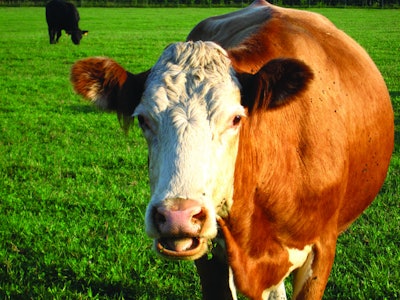
With the rising focus on sustainability, pet food’s environmental impact has come under scrutiny from mainstream media, environmental organizations and others. The main culprit, according to these critiques, is protein sources from livestock.
An oft-cited reference: a 2017 study by Gregory Okin of the University of California Los Angeles (USA) purportedly showing that “dog and cat animal product consumption is responsible for release of up to 64 ± 16 million tons CO2-equivalent methane and nitrous oxide, two powerful greenhouse gasses.” While several of Okin’s assumptions about pet food going into his research have been debunked by industry experts, those documents tend not to be found or reported in most articles citing the study.
Recently, another expert who has studied pet food protein sustainability, Kelly Swanson, Ph.D., a professor at the University of Illinois Urbana-Champaign (USA), addressed other assumptions made about protein sources used in pet food. During an Ask the Pet Food Pro chat about novel proteins, he said that in many cases, a lifecycle analysis (LCA) to calculate the carbon footprint of a product is based on human food.
“Typically, it’s people looking at humans and applying some of those values to pets,” he explained. “If you have meat and bone meal versus a sirloin steak, clearly we know those are different products. They're coming from different cuts, and you have the bone there, but some people give them the same carbon footprint because it comes from a cow. I don't agree with that philosophy, if especially on the pet side, with livestock or aquaculture, we’re using secondary products, that’s really giving a credit, if you will, to the human food industry.”
Okin didn’t lend much credence to the argument of pet food contributing to sustainability by using byproducts from human food production, saying some of those products could be made suitable for human consumption. (Never mind that they aren’t, because most humans in the Western World reject eating them.)
However, his claim that human-grade proteins in pet food are not sustainable finds agreement; Swanson pointed that out in his earlier research. I believe Swanson and others would also concur with Okin that overnutrition—rising pet obesity—increases pet food’s carbon footprint.
A lack of standardization in measuring carbon footprints or conducting LCAs complicates matters. Some progress has been made with pet food: For example, in 2018, FEDIAF (European Pet Food Industry Federation) released rules for the environmental footprints of various products. More recently, the Pet Sustainability Coalition has been conducting research on the carbon footprint of pet food protein sources with Iowa State University.
Still, determining the sustainability of pet food proteins is very complex and needs much more research. Let’s hope that work is reported as much as Okin’s study has been.


















